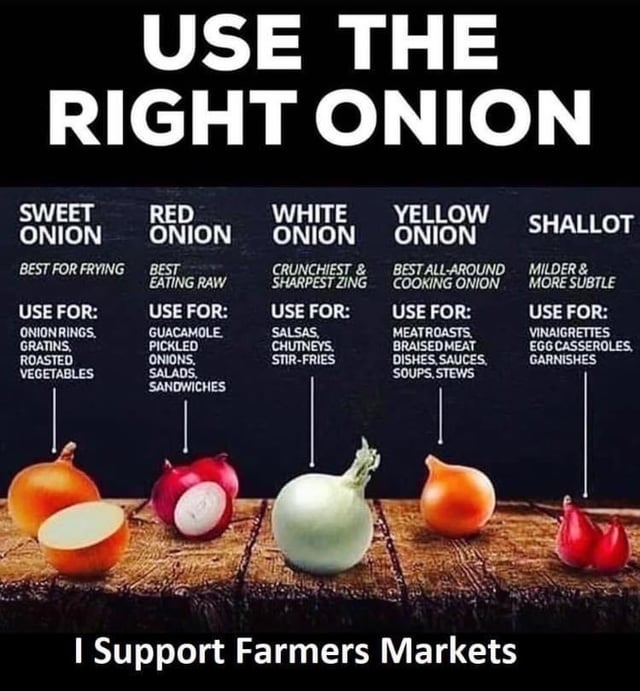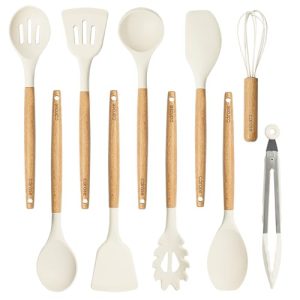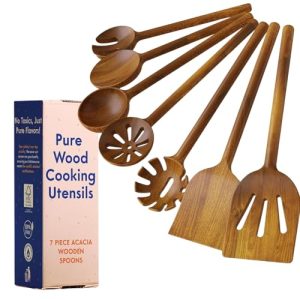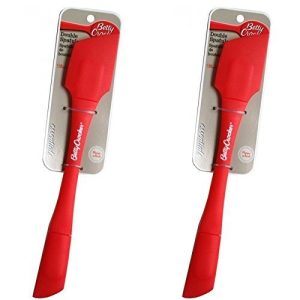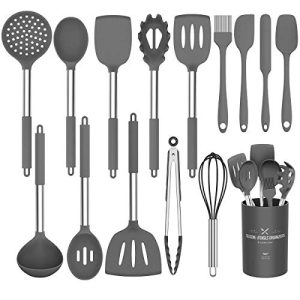When you’re in the kitchen, choosing the right onion can make or break your dish. You might have stood in the grocery aisle, staring at the different types of onions, wondering which one will give your meal that perfect flavor.
Whether you’re whipping up a cozy soup, a sizzling stir-fry, or a fresh salad, knowing the best onion to use can elevate your cooking from good to unforgettable. In this guide, you’ll discover the secrets to choosing the ideal onion for every recipe, ensuring your dishes are as flavorful and delicious as possible.
So, are you ready to uncover which onion will become your new kitchen ally? Let’s dive in and transform your cooking experience!
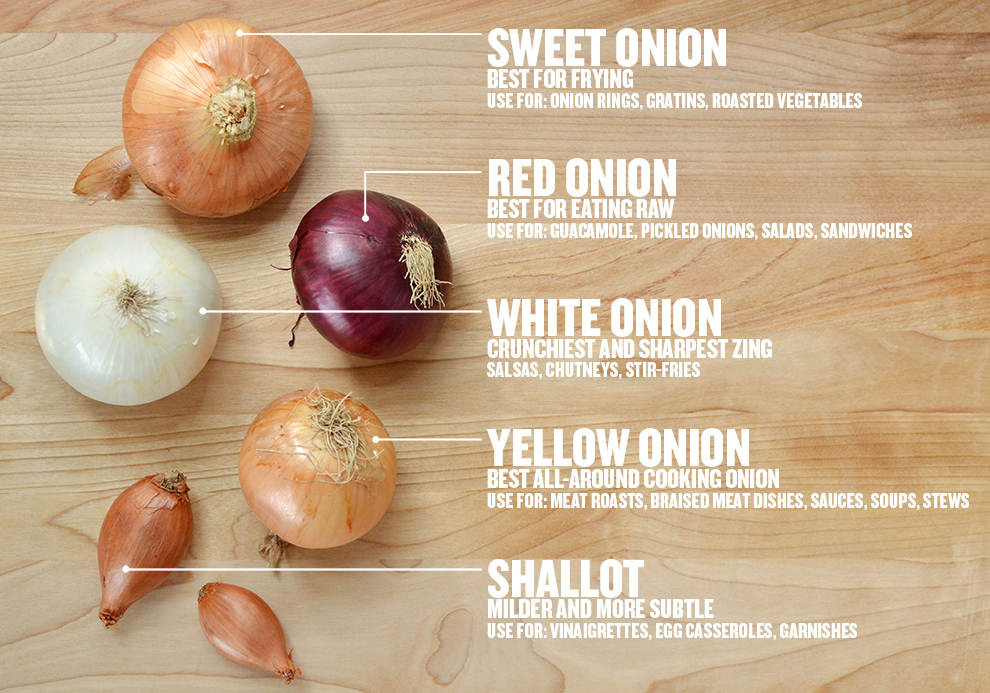
Credit: tasty.co
Variety Of Onions
Onions are a kitchen staple. They enhance the flavor of many dishes. With many types available, choosing the right one can be tricky. Each type has its own unique taste and texture. Understanding these differences can elevate your cooking.
Yellow Onions
Yellow onions are the most common. They have a balanced flavor. Their taste starts sweet and ends with a hint of sharpness. They are perfect for soups, stews, and roasts. Their firm texture holds up well during cooking.
White Onions
White onions have a milder flavor. They are crisp and juicy. These onions are great for salsas and salads. Their sharpness is less than yellow onions. When cooked, they turn soft and sweet.
Red Onions
Red onions are vibrant and colorful. They have a slightly spicy kick. Best used raw in salads and sandwiches. Their bright color adds visual appeal. Cooking them can dull their color.
Sweet Onions
Sweet onions are less pungent. They have a high sugar content. Ideal for caramelizing and baking. Sweet onions shine in onion rings and gratins. They are soft and tender when cooked.
Flavor Profiles
Onions are a staple in many dishes, offering diverse flavors. Each type brings a unique taste to your meals. Understanding onion flavor profiles helps in choosing the right one for your recipe. Dive into the world of onions and explore their distinct flavors.
Mild And Sweet
Mild and sweet onions are perfect for dishes needing subtle flavors. They add a gentle sweetness without overpowering other ingredients. These onions are great for caramelizing, making them ideal for soups and sauces. Vidalia and Walla Walla onions fall into this category. Their sugars create a rich, sweet taste when cooked.
Sharp And Pungent
Sharp and pungent onions add a bold kick to your cooking. Their strong flavor enhances dishes like salsa and stir-fry. Red onions are known for their pungency. They provide a spicy taste that stands out. Raw dishes benefit from their intense flavor, offering a refreshing bite. Yellow onions also have a sharp profile. They are versatile, suitable for both raw and cooked dishes.
Best Uses In Cooking
Onions are versatile in cooking. Each variety adds unique flavors. The choice depends on the dish. Using the right onion elevates your meal. From soups to salads, onions bring depth.
Soups And Stews
Yellow onions work best for soups and stews. They have a robust flavor. Perfect for slow-cooked dishes. Their sweetness enhances over time. Adding them early boosts the taste.
Salads And Sandwiches
Red onions are ideal for salads and sandwiches. They offer a mild, crisp taste. Their vibrant color adds appeal. Serve them raw for best results. Their flavor is subtle yet distinct.
Grilling And Roasting
White onions are great for grilling and roasting. They have a sharp taste. Ideal for caramelizing on heat. Their texture holds well during cooking. Use them to enhance your barbecue.
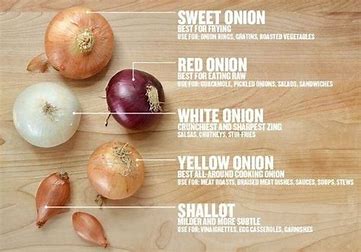
Credit: www.dvo.com
Regional Preferences
Choosing the perfect onion can depend on regional preferences. Sweet Vidalia onions are favored in southern cuisines for their mild flavor. Meanwhile, sharp red onions add zest in Mediterranean dishes.
Onions are a staple in kitchens around the world, but did you know that different regions have their own preferences for which type of onion to use? Whether you’re cooking European, Asian, or American dishes, the choice of onion can significantly impact the flavor and authenticity of your meal. Let’s explore how different cultures choose their onions and why it matters to your culinary adventures.
European Cuisine
In European kitchens, yellow onions often reign supreme. Their mild flavor and versatility make them ideal for a variety of dishes, from hearty stews to delicate sauces. Have you ever tried French onion soup? It’s a perfect example of how yellow onions can be caramelized to create a sweet, rich base. Some regions in Europe, like Italy, prefer the sweetness of red onions in salads and antipasti. It’s fascinating how the same vegetable can be used to create vastly different flavors.
Asian Dishes
Asian cuisine is diverse, and so are its onion preferences. Green onions, also known as scallions, are frequently used across Asia, adding a crisp, fresh bite to stir-fries and soups. In Indian cooking, red onions are a favorite for their bold flavor. They hold their own in spicy curries and provide a satisfying crunch in chutneys. Next time you cook a stir-fry or curry, consider the type of onion you use. Could changing your choice enhance the dish?
American Recipes
American recipes often feature white onions for their sharp taste. They are a popular choice in salsa, barbecue dishes, and burgers. White onions offer a clean, crisp flavor that complements grilled meats and fresh salads. If you enjoy homemade salsa or guacamole, try experimenting with different onion types to find your perfect blend. Do you find yourself reaching for a certain onion out of habit? Maybe it’s time to try a new variety and see how it transforms your favorite recipe. Remember, the type of onion you choose can elevate your dish. Whether you’re cooking a European masterpiece, an Asian delicacy, or an American classic, the right onion makes all the difference. So, what onion will you choose for your next culinary adventure?
Nutritional Benefits
Choosing the right onion can enhance the flavor and nutrition of dishes. Yellow onions offer balanced sweetness and sharpness, perfect for cooking. Rich in vitamins and antioxidants, they support heart health and boost immunity.
Onions are more than just a staple in many kitchens; they’re a powerhouse of nutritional benefits. You may not think about it as you toss them into your pan, but these humble bulbs are packed with vitamins, minerals, and antioxidants that can contribute positively to your health. Choosing the right onion can not only enhance the flavor of your dishes but also boost your nutritional intake. Let’s dive into why onions are so good for you.
Vitamins And Minerals
Onions are a fantastic source of essential vitamins and minerals. They contain Vitamin C, which is crucial for your immune system. This vitamin helps your body fight off colds and other illnesses. They also provide Vitamin B6, which supports brain health and energy levels. You might have noticed feeling more energized after a meal loaded with onions—there’s your reason! Minerals like potassium are found in onions, aiding in heart health and regulating blood pressure. Next time you’re cooking, consider how these nutrients can benefit you.
Antioxidants
Antioxidants are vital for fighting free radicals in your body, and onions are rich in them. Quercetin, a powerful antioxidant, is abundant in onions and has been linked to reducing inflammation and supporting heart health. Imagine the impact on your well-being just by adding onions to your meals. It’s like giving your body a mini detox without even trying. Some studies suggest that onions may help lower the risk of cancer due to their antioxidant properties. Think about that next time you’re chopping onions for your favorite dish. Onions are not just a flavor enhancer; they’re a health enhancer. As you cook your next meal, consider which onion variety will not only add taste but also nutrition to your plate. Which onion will you choose to boost your health today?
Choosing The Right Onion
Onions are a staple in many kitchens around the world. Their flavor can elevate any dish. But with so many varieties, it can be hard to choose the right one. Each type of onion has its own unique taste and texture. This makes them suitable for different cooking methods and recipes.
Whether sautéing, grilling, or using them raw, selecting the right onion matters. Let’s explore some key factors to consider. These include cooking method, recipe requirements, and personal taste.
Cooking Method
The way you cook can affect onion choice. For sautéing, yellow onions are great. They become sweet and flavorful when cooked. For grilling, consider using red onions. They hold their shape and add a mild, sweet taste. White onions are perfect for frying. They offer a crisp texture and strong flavor.
Recipe Requirements
Some recipes call for specific onions. For soups and stews, yellow onions work best. They add a rich depth of flavor. Use white onions for Mexican dishes. Their sharp taste complements spicy flavors. Red onions are ideal for salads and sandwiches. Their color and mild flavor enhance freshness.
Personal Taste
Personal taste plays a big role in onion selection. Some people prefer a milder taste. In this case, sweet onions like Vidalia or Walla Walla are ideal. Others enjoy a stronger flavor. For these individuals, white or red onions are more suitable. It’s important to consider your taste preference. This ensures the best flavor experience.
Storage And Shelf Life
Selecting the right onion enhances any dish. Yellow onions offer a robust flavor, perfect for soups and stews. Red onions add a mild taste, ideal for salads and grilling. Proper storage extends shelf life, preserving freshness and flavor for weeks.
Keep onions in a cool, dry place for optimal results.
Storing onions correctly ensures that their flavors remain robust and they stay fresh for as long as possible. Whether you’re using sweet onions for a caramelized dish or the classic yellow onion for soups, proper storage can make a significant difference in taste and texture. To make sure you’re getting the most out of your onions, let’s dive into some effective storage techniques and how to recognize when an onion has gone past its prime.
Proper Storage Techniques
Keeping onions in the right environment is key to extending their shelf life. Store onions in a cool, dry place, ideally between 45 and 55 degrees Fahrenheit. A well-ventilated pantry or cellar is perfect. Avoid keeping onions in plastic bags, as this can trap moisture and lead to mold. Instead, use mesh bags or baskets that allow air circulation. Have you ever noticed a sprouting onion? That could be a sign that it’s been stored in too warm or humid a place. If you’ve cut an onion and have leftovers, wrap it tightly in plastic wrap and store it in the refrigerator. Use it within a few days to ensure optimal freshness.
Signs Of Spoilage
Recognizing when an onion is no longer good to use is crucial. Soft spots, discoloration, or a strong, unpleasant odor are clear indicators that an onion has spoiled. Have you ever picked up an onion only for it to feel unusually light or hollow? This could mean it’s dried out and past its prime. It’s important to check stored onions regularly. If one is starting to spoil, it can affect the others nearby. Always remember, using a fresh onion not only enhances your dish but also keeps your cooking experience enjoyable. Do you have any tricks for storing onions that might surprise others? Share your tips and let’s keep those onions fresh!

Credit: www.reddit.com
Frequently Asked Questions
Is It Better To Cook With Yellow Or White Onions?
Yellow onions offer a bold flavor, ideal for cooking. White onions have a milder taste, perfect for salads. Choose yellow onions for savory dishes and white onions for raw consumption. Each type enhances specific recipes, catering to different culinary needs.
Why Do Chefs Use Shallots Instead Of Onions?
Chefs prefer shallots for their milder, sweeter flavor. They offer a refined taste and blend easily into dishes. Shallots also caramelize well, enhancing the dish’s complexity. Their subtle aroma and smaller size make them ideal for gourmet recipes.
Which Is Better For Cooking, Red Or White Onions?
Red onions are ideal for raw dishes due to their mild flavor. White onions suit cooking with their sharper taste. Choose based on your recipe’s needs.
Which Onions Taste Best Sauteed?
Yellow onions are ideal for sautéing due to their mild, sweet flavor. They caramelize beautifully when cooked. Red onions offer a sharp taste and vibrant color, perfect for adding variety. Sweet onions like Vidalia provide a subtle sweetness, enhancing dishes.
Choose based on desired flavor and dish requirements.
Conclusion
Choosing the right onion elevates your dish. Each type offers unique flavors. Yellow onions suit everyday cooking. Sweet onions are perfect for caramelizing. Red onions add color to salads. White onions bring a mild taste to salsas. Remember, the right onion enhances your recipe.
Experiment with different types to discover your favorite. Cooking becomes an adventure with these choices. Enjoy exploring the diverse world of onions in your kitchen!
